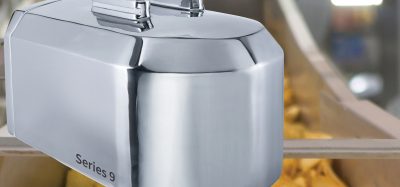Webinar Review: Use of Stable Isotope Analysis in Commercial Food Authenticity Testing
- Like
- Digg
- Del
- Tumblr
- VKontakte
- Buffer
- Love This
- Odnoklassniki
- Meneame
- Blogger
- Amazon
- Yahoo Mail
- Gmail
- AOL
- Newsvine
- HackerNews
- Evernote
- MySpace
- Mail.ru
- Viadeo
- Line
- Comments
- Yummly
- SMS
- Viber
- Telegram
- Subscribe
- Skype
- Facebook Messenger
- Kakao
- LiveJournal
- Yammer
- Edgar
- Fintel
- Mix
- Instapaper
- Copy Link
Posted: 8 May 2017 | New Food | No comments yet
Dr. David Psomiadis, Laboratory Manager at Imprint Analytics GmbH, provides answers to some of the most interesting questions posed to him during our recent webinar ‘Use of Stable Isotope Analysis in Commercial Food Authenticity Testing’…


Sponsored by Thermo Fisher Scientific, the presentation gave an overview of the principles of isotope analysis, including how it works and what influences results, supported by an explanation and interpretation of data from a variety of food and beverage matrices.
David holds a PhD in geology, using stable isotopes to interpret changes of the past, as well as in applied science in the areas of food and environment. Since 2013, David has been the Laboratory Head at Imprint Analytics. They were the first commercial laboratory for isotope analysis, established in November 2012. ISO17025 accredited, they are an international partner in research and development and contract analysis.
David began by discussing the principles of isotope analysis, how five organic elements create an isotope fingerprint with can be identified using techniques such as Isotope Ratio Mass Spectrometry (IRMS). He went on to highlight advancements in IRMS, such as the addition of gas/liquid chromatograph to be able to perform Compound Specific Isotope Analysis (CSIA), modernising a traditional method for commercial purposes on testing geographical origin of food and naturalness of food ingredients. Using such techniques it is possible to accurately identify origin, and type of source material by marrying with climatic conditions and other influencing factors which govern the isotope ratio (water, soil, geology etc.). This creates sample specific DNA and allows for the history of the sample to be ‘read’, and an assessment about authenticity to be made.
In this article David selects a few of his favourite questions from the audience, and provides his answers.
Why are big databases not the most suitable tool for the geographic origin testing of food?
The main disadvantage is that a database is only a snapshot of a particular time. Experience shows that the possibility of the database providing erroneous predictions is high, especially when the geographic question refers to neighbouring areas. The databases require continuous updating, evaluation and processing. Even then, there is no direct comparison to the authentic primary product on the field, which is necessary for cases with a high demand of strong evidence. Seasonal and annual differences of the conditions in a given area will also distort the test. Furthermore, one should consider the time and costs needed to develop a new database before testing a certain product and the complexity of getting multiple authentic reference samples.
Why is 2D-isotope fingerprinting of flavour substances necessary for the proof of naturalness?
The use of single isotope testing limits the detection capabilities of the technique. It is impossible to distinguish all sources of nature-identical flavours using only one isotope ratio. It has also been reported that manipulation of the carbon isotope ratios was already feasible in the 1980s, making it possible to produce synthetic vanillin with similar carbon isotope composition to natural vanilla. Other techniques are also limited in respect to the sample matrix, excluding processed or consumer products from the range of tested materials. The combination of GC with the IRMS technology can offer this analysis, with limited effort in sample preparation.
Can synthetic (petroleum based) ingredients have a stable isotopic signature similar to that of a plant?
In the case of carbon-13 (traditionally used for this), yes they can. By combining more stable isotope ratios, e.g. hydrogen, the differentiation becomes clear and complete. For example, synthetic vanillin (petroleum based), natural vanillin ex clove (eugenol), natural vanillin ex turmeric (curcumin) and synthetic vanillin ex lignin (wood) have overlapping carbon-13 compositions. Similarly, all natural vanillins (including vanilla) have similar carbon-14 composition, due to their modern source material. The combination of two isotope ratios stretches the differing clusters of each type of the compound, making it possible to distinguish all source materials, natural and synthetic.
Are there currently other isotopes for similar use being considered, rather than those mentioned?
Yes, actually the sixth to mention for geographic origin testing would be Sr isotopes. Also, other heavier elements have been used in research. However, one should consider the costs of routine analysis of such heavy elements’ isotope ratios. IRMS cannot be used for the determination of the stable isotopes of the heavy elements. MC-ICP-MS and TIMS are appropriate technologies. The cost of this equipment is much higher and the sample preparation, standards and materials are much more expensive today for such analysis. However, the instrumentation is available, modern and very reliable. It is a matter of having commercially available services that can provide this type of testing, which in some cases combined with the stable isotope ratios of the light elements can provide further information.
Do you think we will reach the point where one equipment configuration will serve for all products – C3, C4 Plants, fruit juices, flavour ingredients, food additives, wine etc.?
In principle, no. The basic detecting instrument is the IRMS (Isotope Ratio Mass Spectrometer). The sample introduction takes place through different peripherals, depending on the type of analysis, the type of sample, and the target element. In general, one can list the configurations of the IRMS coupled with one of the following: a. Elementar Analyzer, b. Thermal Conversion oven, c. Equilibration unit, d. Dual inlet, e. Gas chromatograph, f. Liquid chromatograph. Different interfaces also need their respective coupling devices to optimise the gas flows and the connections between the peripherals and the IRMS. Also, different autosamplers can be used for liquid injection or for encapsulated solid samples.
This webinar was the first in a series of educational webinars, providing you with the opportunity to learn from experts and in-house specialists from Thermo Fisher Scientific, on the use of differentiated technology in the field of food integrity. Follow the link to find out more about this webinar and the rest in the series. The webinar is available to watch on demand here.
Issue
Related topics
Flavours & colours, Food Fraud, Food Safety, Ingredients, New product development (NPD), Research & development, Technology & Innovation, Traceability









